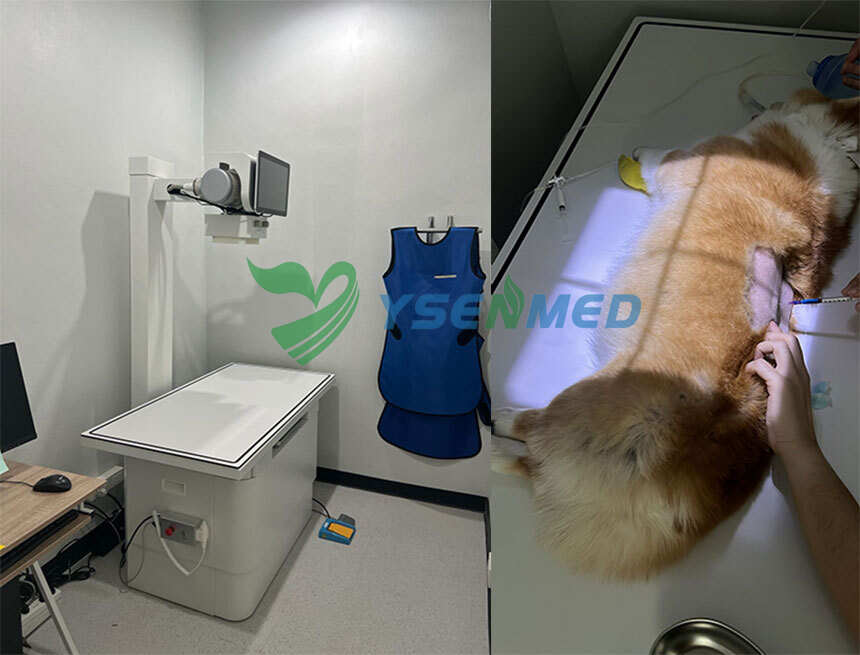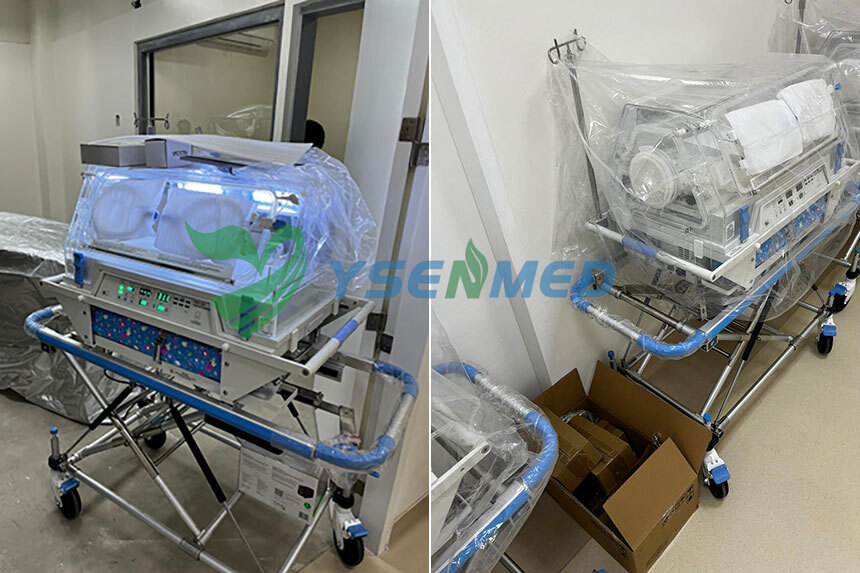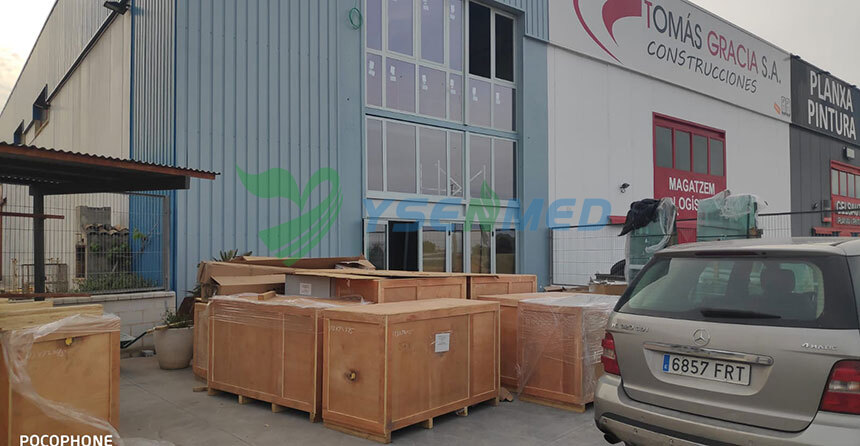Title: Ergonomic Design, Exceptional Care: The Advantages of Gyne Beds
Introduction
In healthcare settings, the importance of patient comfort, safety, and efficiency cannot be overstated.
Gyne beds, specifically designed for gynecology and obstetrics, are an essential component of modern medical facilities. These specialized beds offer a unique blend of ergonomic design and functionality, providing numerous advantages for both patients and healthcare providers. In this comprehensive article, we will explore the benefits of gyne beds, highlighting how their ergonomic design contributes to exceptional care in gynecology and obstetrics.
Understanding Gyne Beds
Gyne beds are designed for use in gynecological examinations, obstetric procedures, and other related medical practices. Unlike standard hospital beds, gyne beds have unique features that cater specifically to the needs of gynecologists, obstetricians, and patients undergoing gynecological or obstetric care. These features include adjustable positions, support for various examination and birthing postures, and ergonomic design elements that enhance comfort and safety.
Key Features of Gyne Beds
Gyne beds are designed with a focus on versatility, comfort, and safety. Here are some of the key features that distinguish them from traditional hospital beds:
Adjustable Positions:
Gyne beds offer a range of adjustable positions, allowing healthcare providers to position patients optimally for examinations, procedures, and childbirth. The ability to raise, lower, tilt, or recline the bed enhances accessibility and comfort for both patients and clinicians.
Leg Supports and Stirrups:
Gyne beds are equipped with leg supports or stirrups, which provide stability and comfort during gynecological examinations and obstetric procedures. These supports are adjustable to accommodate patients of different sizes and preferences, ensuring a safe and secure positioning during examinations.
Ergonomic Design:
The ergonomic design of gyne beds prioritizes patient comfort and clinician ease of use. Features such as padded surfaces, rounded edges, and easy-to-operate controls contribute to a positive experience for patients and reduce strain for healthcare providers during extended procedures.
Integrated Accessories:
Gyne beds often come with integrated accessories, such as lighting systems, examination trays, and storage compartments. These accessories enhance workflow efficiency by providing clinicians with easy access to necessary tools and equipment during procedures.
Safety Features:
Gyne beds are designed with safety in mind, incorporating features like side rails, locking mechanisms, and anti-slip surfaces to prevent accidents and ensure patient security. These safety features are especially important during childbirth and other high-risk procedures.
Benefits of Gyne Beds
The advantages of gyne beds are numerous, benefiting both patients and healthcare providers in various ways:
Enhanced Patient Comfort:
The ergonomic design and adjustable positions of gyne beds enhance patient comfort during gynecological examinations and obstetric procedures. Patients can be positioned in a way that reduces discomfort and anxiety, contributing to a more positive experience.
Improved Workflow Efficiency:
Gyne beds' versatility and integrated accessories streamline workflow in clinical settings. Healthcare providers can quickly adjust the bed's position, access necessary tools, and conduct examinations or procedures without unnecessary delays. This efficiency contributes to improved patient throughput and reduced wait times.
Facilitation of Various Procedures:
Gyne beds are designed to accommodate a wide range of procedures, from routine gynecological examinations to complex obstetric surgeries. The flexibility of these beds allows healthcare providers to perform multiple procedures in the same room, reducing the need for patient transfers and enhancing continuity of care.
Support for Labor and Delivery:
Gyne beds are commonly used in labor and delivery rooms, providing a safe and comfortable environment for childbirth. The adjustable positions and leg supports allow mothers to find the most comfortable birthing position, facilitating a smoother delivery process.
Reduced Strain for Healthcare Providers:
The ergonomic design of gyne beds reduces physical strain for healthcare providers, minimizing the risk of musculoskeletal injuries during long procedures. This feature is particularly important for clinicians who work in high-volume settings or perform complex surgeries.
Patient Safety and Security:
Gyne beds' safety features, including side rails, locking mechanisms, and anti-slip surfaces, contribute to enhanced patient safety and security. These features are crucial in obstetric settings, where patient safety is paramount during labor and delivery.
Applications of Gyne Beds
Gyne beds are used in various medical settings, each with its unique requirements and procedures. Let's explore some of the key applications of gyne beds:
Gynecological Examinations:
Gyne beds are used for routine gynecological examinations, including pelvic exams, Pap smears, and other diagnostic tests. The adjustable positions and leg supports ensure patient comfort and facilitate easy access for clinicians during examinations.
Obstetric Procedures:
Gyne beds are essential in obstetric settings, supporting a wide range of procedures, from prenatal check-ups to labor and delivery. The versatility of these beds allows healthcare providers to perform fetal monitoring, ultrasounds, and childbirth in the same room.
Gynecological Surgeries:
Gyne beds are also used for gynecological surgeries, such as hysterectomies, laparoscopies, and myomectomies. The adjustable positions and ergonomic design allow surgeons to perform these procedures with precision and reduced strain.
Recovery and Post-Operative Care:
Gyne beds are used for recovery and post-operative care in gynecology and obstetrics. The comfort and safety features of these beds contribute to a smooth recovery process, allowing patients to rest and heal in a secure environment.
Conclusion
Gyne beds play a crucial role in modern healthcare, offering ergonomic design and exceptional care in gynecology and obstetrics. Their versatility, comfort, and safety features make them invaluable tools for healthcare providers and patients alike. By enhancing workflow efficiency, reducing strain for clinicians, and improving patient comfort, gyne beds contribute to a more patient-centered healthcare system.
As medical technology continues to evolve, gyne beds will remain at the forefront of gynecological and obstetric care, supporting a wide range of procedures and ensuring the safety and comfort of patients. Healthcare providers can rely on these specialized beds to deliver high-quality care and improve patient outcomes in various medical settings.
Gyne Beds and the Patient Experience
The patient experience is a critical aspect of healthcare, directly impacting patient satisfaction and outcomes. Gyne beds play a significant role in shaping this experience by providing comfort, safety, and flexibility throughout various stages of care.
Creating a Welcoming Environment:
Gyne beds, with their ergonomic design and adjustable positions, contribute to a welcoming environment for patients. This is particularly important in gynecology and obstetrics, where a calming atmosphere can reduce anxiety and stress. The ability to adjust the bed to a comfortable position helps put patients at ease, fostering a positive experience.
Promoting Dignity and Respect:
Gyne beds are designed to maintain patient dignity and respect during examinations and procedures. The adjustable features allow patients to find a position that suits them, while integrated privacy features, such as curtains or screens, ensure confidentiality. This emphasis on patient dignity helps build trust and encourages open communication between patients and healthcare providers.
Supporting Family Involvement:
In obstetric settings, family involvement is often encouraged during childbirth and other procedures. Gyne beds, with their flexible design, can accommodate family members or support persons in the room, facilitating a supportive environment. This inclusion can enhance the birthing experience and strengthen the bond between patients and their families.
Gyne Beds and Advancing Healthcare Outcomes
Beyond the patient experience, gyne beds contribute to advancing healthcare outcomes by enhancing clinical efficiency and supporting a range of procedures. Let's explore some ways in which these specialized beds contribute to better outcomes.
Reducing Procedure Times:
The adjustable and ergonomic design of gyne beds allows healthcare providers to conduct procedures more efficiently. The ability to quickly adjust the bed's position and access integrated accessories streamlines workflow, reducing procedure times. This efficiency benefits both patients and clinicians, leading to quicker recoveries and improved patient throughput.
Facilitating Minimally Invasive Procedures:
Gyne beds support a wide range of minimally invasive procedures, allowing healthcare providers to perform interventions with reduced risk and recovery time. The flexibility of these beds enables clinicians to adapt to various surgical techniques, minimizing the need for traditional open surgery. This approach reduces patient trauma and promotes faster healing.
Enhancing Team Collaboration:
Gyne beds' adjustable features and integrated accessories facilitate collaboration among healthcare teams. The ability to position the bed for optimal access allows multiple clinicians to work together during complex procedures. This collaborative approach enhances patient care and ensures that healthcare providers can address any unexpected challenges effectively.
Maximizing the Benefits of Gyne Beds
To maximize the benefits of gyne beds, healthcare providers should consider several best practices and strategies. These approaches can help ensure that gyne beds are used effectively and contribute to optimal patient care.
Regular Maintenance and Inspection:
Gyne beds require regular maintenance and inspection to ensure they remain in optimal condition. Healthcare facilities should establish a maintenance schedule to check for wear and tear, ensure safety features are functioning correctly, and clean the beds thoroughly. Proper maintenance extends the lifespan of gyne beds and ensures patient safety.
Staff Training and Education:
Proper training and education for healthcare staff are crucial for maximizing the benefits of gyne beds. Clinicians and support staff should be trained on how to operate the beds, adjust positions, and use integrated accessories. This knowledge ensures efficient workflow and reduces the risk of errors during procedures.
Customizing for Patient Needs:
Gyne beds offer a range of adjustable features that can be customized to meet individual patient needs. Healthcare providers should take the time to understand each patient's preferences and adjust the bed accordingly. This personalized approach enhances patient comfort and satisfaction.
Integrating Technology:
Gyne beds can be integrated with various technologies to improve patient care and workflow efficiency. For example, electronic medical records (EMR) systems can be connected to the bed's controls, allowing for automated documentation of procedures and patient positioning. This integration reduces paperwork and streamlines administrative tasks.
Conclusion
Gyne beds play a vital role in modern healthcare, providing ergonomic design and exceptional care in gynecology and obstetrics. Their versatility, comfort, and safety features contribute to improved patient experiences and healthcare outcomes. By supporting a wide range of procedures, from routine examinations to complex surgeries, gyne beds are essential tools for healthcare providers.
As healthcare continues to evolve, gyne beds will remain at the forefront of gynecological and obstetric care, contributing to more efficient workflows, reduced patient discomfort, and enhanced patient-centered care. By embracing best practices for maintenance, staff training, and technology integration, healthcare providers can maximize the benefits of
gyne beds and ensure they play a central role in advancing healthcare outcomes.




